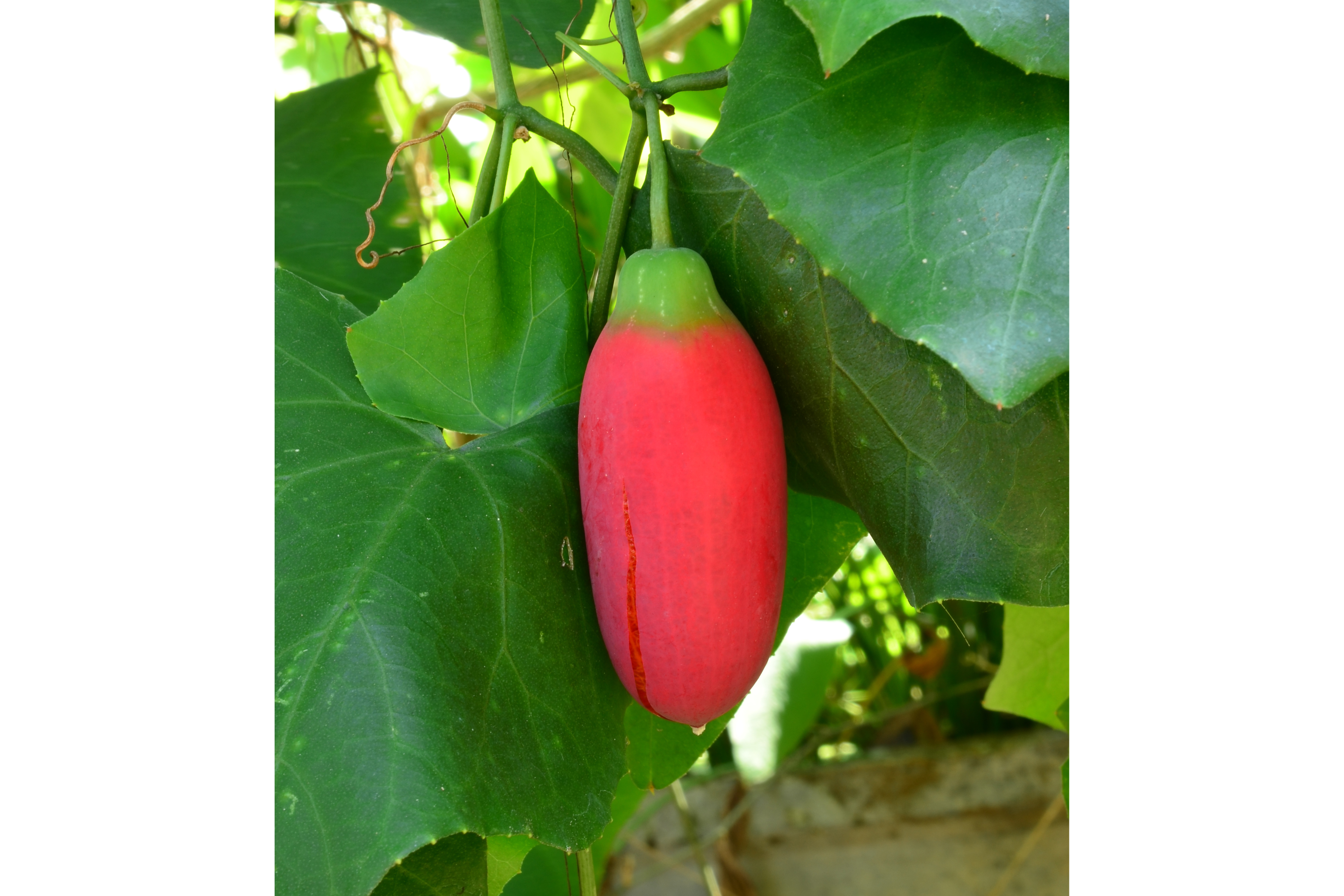Ivy Gourd
(Coccinia grandis)

Description
Coccinia grandis, the ivy gourd, also known as scarlet gourd, tindora and kowai fruit, is a tropical vine. It grows primarily in tropical climates and is commonly found in the Indian states, where it forms a part of the local cuisine. Coccinia grandis is cooked as a vegetable. Seeds or fragments of the vine can be relocated and lead to viable offspring. This can occur when humans transport organic debris or equipment containing C. grandis. Once the ivy gourd is established, it is presumably spread by birds, rats, and other mammals. In Hawaii, the fruit may be dispersed by pigs. Long-distance dispersal is most commonly carried out by humans due to its culinary uses or by mistake. Regarded as very invasive and on the Hawaii State Noxious Weed List, ivy gourd can grow up to four inches per day. It grows in dense blankets, shading other plants from sunlight and highjacking nutrients, effectively killing vegetation underneath. It was introduced to Hawaii as a backyard food crop. It is sometimes tolerated along garden fences and other outdoor features because of its attractive white flowers. It has escaped to become a vigorous pest in Hawaii, Florida, Australia, and Texas. Both physical and chemical recommendations are made for control of the ivy gourd. It is very difficult to control this plant physically except by bagging fruits. Hand-harvesting normally does not kill the plant, but rather breaks the vine blankets into smaller pieces and the plant is able to re-establish when it touches the ground. These methods can make the infestation worse and further the need for more rigorous control methods. Picking the fruit and placing them in plastic bags can help decrease the seed bank present with the soil. When using chemical controls, that ivy gourd responded well to a thin-lined bark application of 100% Garlon 4 (triclopyr), leaving plants in place so as not to translocate the herbicide or spread the pest. It is applied multiple times until the vine dies. In Hawaii, several species of insect have been introduced with the purpose of being a biocontrol. Two weevils, Acythopeus burkhartorum and A. cocciniae, were introduced by the Department of Agriculture to Oahu and Hawaii. African vine moths were also released onto Oahu and Maui. On the island of Maui, the A. cocciniae apparently is established and damaging leaves. The larvae feed on the plant and the adults chew holes in the leaves. The moth has yet to appear successful in its purpose.
Taxonomic tree:







